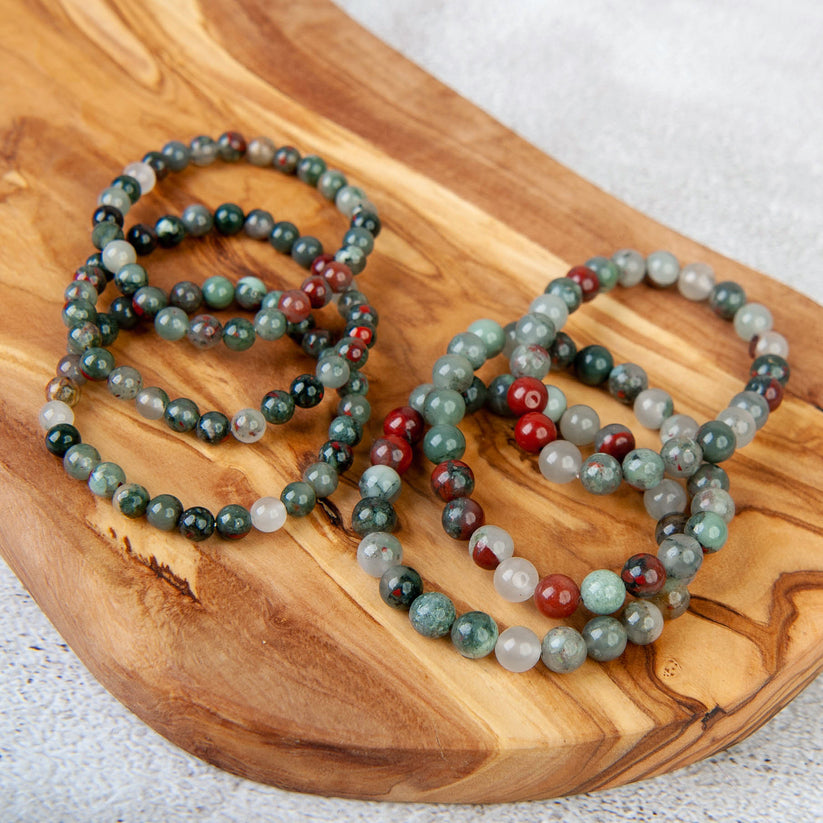What is a Mineral?
Article by Rezolutions Design
$0.00 USD
Article by Rezolutions Design

To truly understand rock minerals, we should start with the basics and define rocks, minerals, as well as the difference between them!
A mineral is a substance that occurs naturally and takes on a solid, crystalline appearance once formed. Minerals are inorganic, which means that they are not derived from living things. An example of a mineral would be quartz.
A rock is a combination of several minerals that come together to create one solid body. An example of this would be limestone, which is composed of calcite and aragonite. Or granite, which is made up of the minerals quartz, potassium feldspar, and sodium feldspar. Rocks are generally divided into three groups: igneous, sedimentary, and metamorphic.
Igneous rocks
Igneous rocks are rocks that are created when molten magma from inside the Earth rises to the surface and cools. This exposure to cool air and water means that the lava turns into very fine crystals. Examples of igneous rocks are granite, basalt, and obsidian.
Sedimentary rocks
Sedimentary rocks come from sand, mud, pebbles, and minerals that have eroded over time and been deposited in seas, lakes, and deserts. As the layers of deposits build over time, they begin to compress and turn into rocks. Examples of these rocks include sandstone and limestone.
Metamorphic rocks
Metamorphic rocks come from igneous, sedimentary, and even over metamorphic rocks. These rocks are typically buried deep within the ground where they are exposed to high heat and pressure. This causes the rocks to "cook" and take on a more crystalline form. Examples of metamorphic rocks include marble and slate.
Therefore, what is a rock-forming mineral? As we now know, different rocks are made out of different combinations of minerals. In fact, most rocks are made out of a short list of especially common minerals, which are known as the "rock-forming minerals". The types of rock minerals that feature on this list are quartz, micas, calcite, garnet, olivine, pyroxenes, feldspars, and amphiboles.
In addition to these rock-forming minerals, rocks will also feature small quantities of other minerals known as "accessory minerals". Some common accessory minerals include titanite, pyrite, and zircon.
Properties of rock minerals
Minerals can come in a rainbow of different colors, which is why crystals can be such vibrant objects of interest! Rubies are a mineral known for their rich red hue, while sapphires are a mineral known for their dazzling blues. However, these minerals are also prime examples of why color is not the best indicator of a mineral's identity - as sapphires can also be yellow, green, pink, and even black! Furthermore, you may think of rubies as being red, but their color can be so diluted that they look light pink, or so saturated that they look black.
A mineral's "crystal habit" refers to the shape that it takes when developed. Minerals can come in a variety of naturally-formed shapes and formats. For instance, pyrite has a cubic habit and forms in a cluster of cube-like shapes. Meanwhile, quartz forms in a hexagonal habit and has six sides. Other examples of crystal habits include acicular habits that grow in needle-like formations, columnar habits that grow in long prisms, or botryoidal habits that grow in grape-like round clusters.
Minerals are measured on a scale of hardness (the Mohs scale), which refers to how vulnerable they are to getting scratched. Different minerals are characterised by different levels of hardness due to their varying chemical compositions and structures. Famously, the hardness mineral found on Earth is the diamond, which scores a 10 on the Mohs scale.
Another characteristic that minerals have is how light is reflected on their surface, which is referred to as a mineral's lustre. Just like hardness, lustre is a result of a mineral's chemical composition, the atoms present, and how they are bonded. Lustre is described with the terms adamantine, dull/earthy, greasy, pearly, vitreous, silky, resinous, or metallic. Adamantine crystals are transparent like a diamond, dull minerals have no reflection at all, greasy minerals look as if they are coated in oil (such as opal), pearly minerals like stilbite have a surface that resembles pearls, vitreous means glass-like like quartz, silky minerals look like silk fabric, resinous looks like resin, while metallic minerals like pyrite look like metal.
When some minerals are rubbed against porcelain, they leave behind a mark. The color of this mark is known as a mineral's "streak". For example, despite Chalcopyrite's golden brown color, it leaves behind a green and black streak. As you can imagine, not all mineral's have a streak. This test is only possible with minerals that score a 7 or less on the Mohs scale, anything higher than that will be too hard.
Types of rock minerals
Some of the most common types of minerals are:
Biotite (black mica)
This is a dark colored and often pearly mineral that is most commonly found in igneous and metamorphic rocks. It can be used in rubber products.
Copper
Copper is a mineral and metal known for its electrical conductivity, malleability, and resistance to corrosion. It has a metallic lustre and orange-toned color, and it is often used in electrical goods.
Diamond
The hardest substance on the planet, diamonds are characterised by their adamantine lustre, maximum hardness, and pure carbon make-up. Diamonds are not only used in expensive jewelry, they're also used industrially to cut other hard minerals.
Feldspar
Feldspar is a group of minerals that include calcium, potassium, and sodium. They are one of the biggest mineral groups on the planet, and they make up a large part of many rocks.
Gold
Gold is an important mineral because of its chemical stability, making it important in electronics and in dentistry.
Halite
Halite is also known as sodium chloride, and more commonly referred to as salt! It's an essential mineral for humans and animals, which is why we love to sprinkle it on our food.
Quartz
Quartz is the second most abundant mineral in the Earth's crust and is found in igneous, sedimentary and metamorphic rocks.

Sign up now and enjoy a 10% discount on your first purchase. Start your mining adventure today!
Sign up now and enjoy a 10% discount on your first purchase.
Explore
Learn
Explore
Learn
Get In Touch
Sign up now and enjoy a 10% discount on your first purchase.
© 2026 DECLAN'S MINING CO. - ALL RIGHTS RESERVED.
